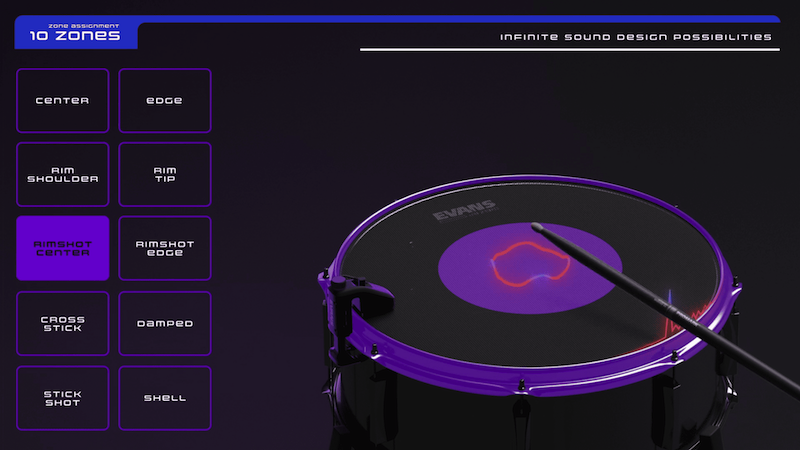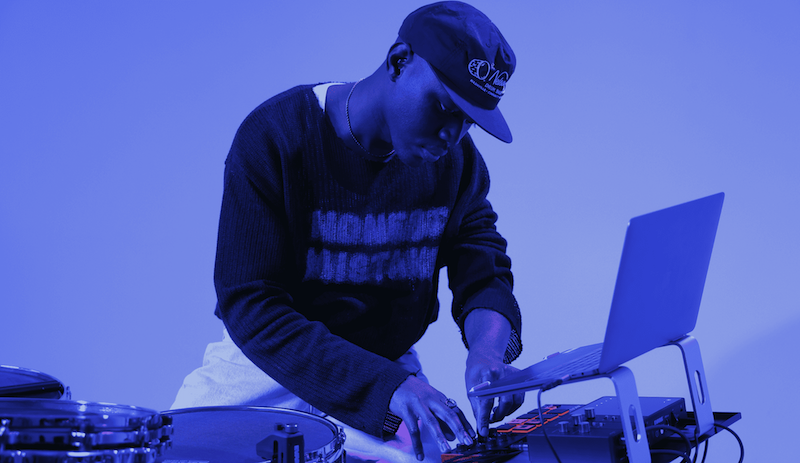Everything You Need to Know About
Drum Triggers & Sensors
What is a Drum Trigger?
A drum trigger is a device attached to the rim of a drum that detects vibrations on the drumhead when it's played. Most triggers use a piezoelectric element (piezo) to capture these vibrations. When the drumhead is hit, the trigger sends an electronic signal to a drum module or software. Many triggers offer two zones (head and rim), which allows the module to produce different sounds based on which part of the drum is played. These sounds can range from acoustic drums to electronic instruments.
What is a Drum Sensor?
Drum sensors utilize more advanced technology than traditional triggers and are more fully functional. Systems like Sensory Percussion use a small magnetic pickup element attached to the drumhead (acoustic or mesh) to capture playing details with exceptional accuracy. By combining this magnetic pickup with a built-in piezo sensor, Sensory Percussion can detect up to 10 distinct zones per drum. This advanced technology provides superior response and functionality compared to traditional triggers, making Sensory Percussion a popular choice for practice, music production, and live performance.
What Do Drum Triggers and Sensors Do?

Drum triggers serve multiple purposes for drummers and vary in their capabilities. Most commonly they’re used for:
- Sound Enhancement: Layer sounds on your acoustic or mesh head for a more polished or complex tone.
- Sound Replacement: Swap acoustic drum sounds with pre-recorded or synthesized sounds in a recording setting.
- Live Performance: Add electronic sounds or loops to live performances using mesh or acoustic heads.
In addition to those, advanced systems such as Sensory Percussion offer even more uses such as:
- Quiet Practice: Turn an acoustic kit into a powerful low-volume practice tool. Combine mesh heads with Sensors and low volume cymbals in an apartment or small space without losing feel or sound quality.
- Composition: Compose, edit, and perform your own tracks from behind the drum set.
- Recording: Capture your performance as audio or MIDI for seamless integration with a DAW. Acoustic cymbals can be recorded with microphone(s) using the built-in XLR jacks on the Sensory Percussion Portal.
Do Most Drummers Use Drum Triggers or Drum Sensors?
Not all drummers use triggers or sensors, but they can be helpful in a variety of musical styles and performance situations. For instance, metal drummers can use them to achieve more consistency in their double-bass drumming. Electronic musicians might use them for advanced layering in a live performance, combining acoustic and electronic sounds. Gospel, worship, and pop drummers can use a single trigger, sensor, or e-drum pad to run loops and electronic sounds during live performances. Even acoustic purists can benefit from the added convenience and versatility that triggers and sensors provide. While they aren’t necessary to play drums, triggers and sensors add extra functionality and depth that can be useful in many musical contexts.
Which Drum Triggers or Drum Sensors Are Right for Me?

Choosing the right trigger or sensor depends on your goals:
- Price: Basic triggers are affordable and a good starting point. Multi-zone systems like Sensory Percussion offer advanced features but are more expensive.
- Function: For basic sound layering, triggers work well. For quiet practice and customization, Sensory Percussion is a better choice.
- Genre: Traditional triggers work well for consistency in metal and rock, but multi-zone systems like Sensory Percussion add creative options for any genre, including metal, rock, electronic, and pop.
- Ease of Use: Basic triggers are straightforward for sound layering, while multi-zonal systems like Sensory Percussion require more setup but are ideal for drummers who want deeper customization.
To learn more about Sensory Percussion, check out Shawn Crowder’s demonstration or schedule a chat with a Sensory Percussion expert.